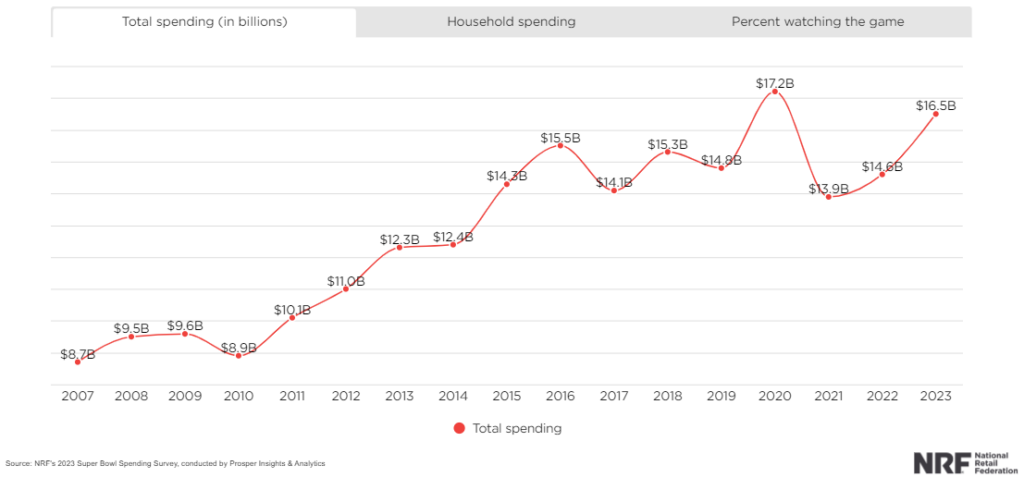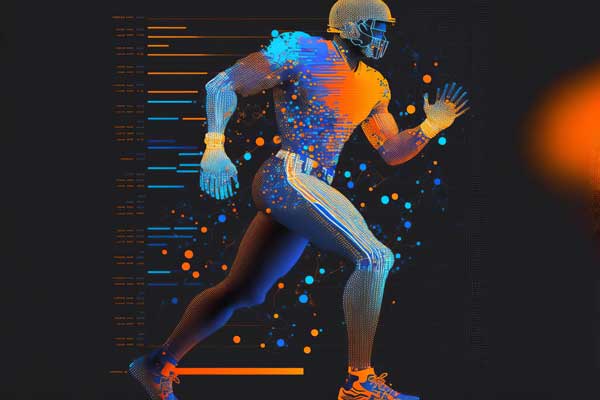Like most other sports, the National Football League has embraced data. Teams are built around analytics, and the analytics extend far beyond the front office. Fans watching any given game are subject to the statistics, from the likelihood a kicker makes a field goal to the chances a team makes the playoffs or wins a game in real time.
The league is always trying to find new metrics that it can use to evaluate play on the field. Each year it sponsors the “Big Data Bowl,” in which teams are tasked with developing a system to measure different aspects of the game, including special teams play and offensive line play, where performance has historically been difficult to quantify.
One of the most reliable data points involved with the NFL, though, has nothing to do with what is happening on the field. It can be as big a draw as the game itself, and the data can make a huge difference to those who use it. We’re talking, of course, about the Super Bowl commercials.
Big business
There’s no question Super Bowl ads are big business. What began at about $150,000 a minute in its earliest days is now up to a reported $6 million or more for 30 seconds of ad time. But the data goes far beyond what companies are spending for that precious air time in front of more than 100 million viewers.
The technology company Kantar conducted research on the actual business impact Super Bowl ads can have on organizations. It found that the 2021 Super Bowl ads delivered an average return on investment (ROI) of $4.60 per dollar spent. Companies record data on everything from how interested fans are in watching the game each year to which ads are most effective. Kantar broke its analysis of ads into creative themes such as relatable human insights, a brighter future, and pragmatic solutions, while noting that including humor and celebrities are two themes that reappear all the time.

Gathering the data
The lead-up to the Super Bowl is an important time to gather data as well. Each year in early January, the National Retail Federation conducts a Super Bowl survey to see how consumers expect to spend and celebrate for the big game. The 2023 NRF survey found that more than 103 million people plan to attend or throw a Super Bowl party, and almost 18 million more plan to watch the game at a bar or restaurant. Those are the eyes advertisers are looking to put their products in front of.
The NRF estimates total spending on food, drinks, apparel, and other purchases like decorations to reach $16.5 billion, or $85.36 per person.

Source: NRF – Super Bowl Data Center

Source: NRF – Super Bowl Data Center
Besides the information businesses can gather about people’s spending in the moment, they can also identify larger trends from this data. In this case, the data indicates that, after a dip for Super Bowl LV, people are once again approaching pre-pandemic levels of spending on the Super Bowl.
There’s no shortage of data when it comes to the Super Bowl. The game is also famous for its prop bets – including everything from guesses on how long the singing of the national anthem will take to in-game statistics like total catches by a running back. It might be the die-hard fans who delve into those stats, but even casual fans might look to the percentages to see what the chances are that their numbers make them a winner in their Super Bowl squares pool.
In the NFL, the analytics are increasingly focused on player safety. Some of the challenges in its Big Data Bowl involve ways of designing aspects of the game in a way that decrease risk. The stakes are different for companies getting in on the advertising game. On the Monday after the game there is a lot of talk about what happened between the lines. But just as often, viewers are talking about their favorite ads. That’s the data the advertisers want. And for many organizations, their favorite ad will be the one that saw success because of what they were able to learn from the data.
- What Data Can Bring to California’s Investment in its Ports - July 25, 2024
- Unlocking the Power of Data in the Utilities Industry - July 18, 2024
- How Analytics Can Help Your Wholesale Nursery Grow - July 17, 2024



